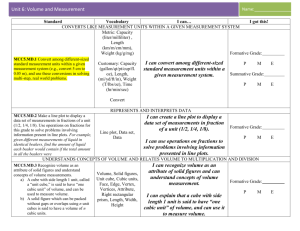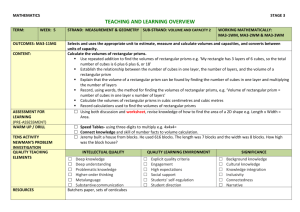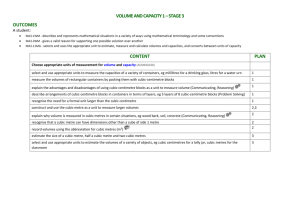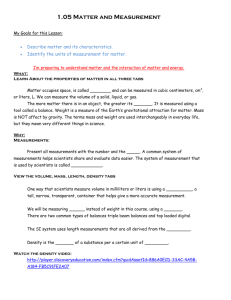5.MD.C.5.C unpacked
advertisement
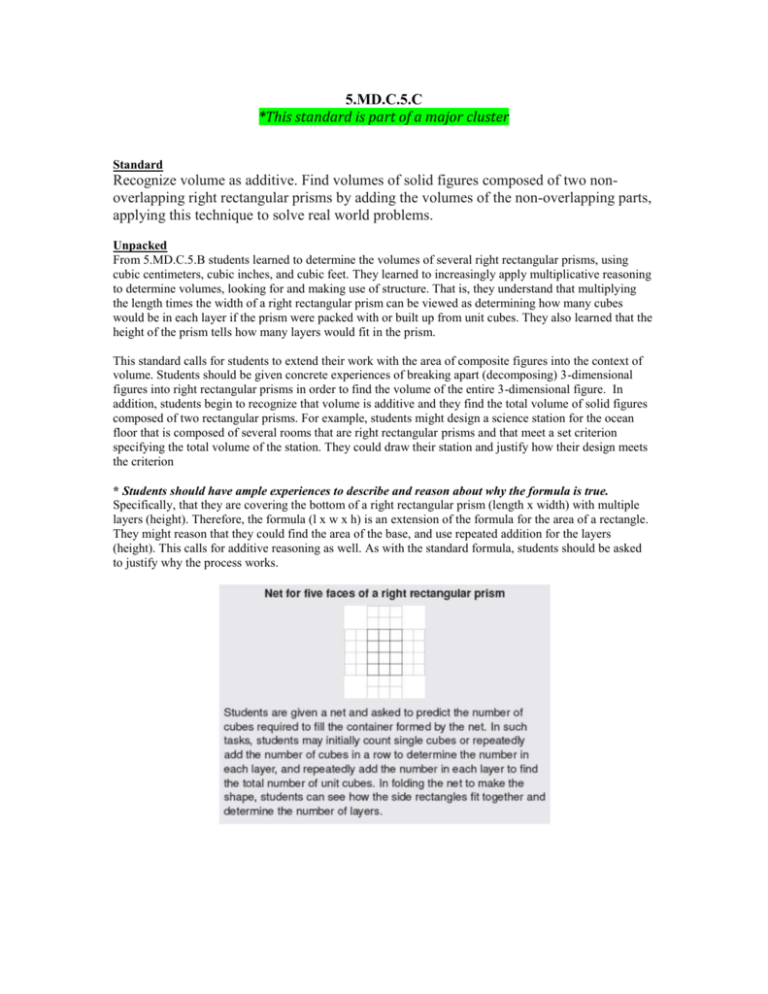
5.MD.C.5.C *This standard is part of a major cluster Standard Recognize volume as additive. Find volumes of solid figures composed of two nonoverlapping right rectangular prisms by adding the volumes of the non-overlapping parts, applying this technique to solve real world problems. Unpacked From 5.MD.C.5.B students learned to determine the volumes of several right rectangular prisms, using cubic centimeters, cubic inches, and cubic feet. They learned to increasingly apply multiplicative reasoning to determine volumes, looking for and making use of structure. That is, they understand that multiplying the length times the width of a right rectangular prism can be viewed as determining how many cubes would be in each layer if the prism were packed with or built up from unit cubes. They also learned that the height of the prism tells how many layers would fit in the prism. This standard calls for students to extend their work with the area of composite figures into the context of volume. Students should be given concrete experiences of breaking apart (decomposing) 3-dimensional figures into right rectangular prisms in order to find the volume of the entire 3-dimensional figure. In addition, students begin to recognize that volume is additive and they find the total volume of solid figures composed of two rectangular prisms. For example, students might design a science station for the ocean floor that is composed of several rooms that are right rectangular prisms and that meet a set criterion specifying the total volume of the station. They could draw their station and justify how their design meets the criterion * Students should have ample experiences to describe and reason about why the formula is true. Specifically, that they are covering the bottom of a right rectangular prism (length x width) with multiple layers (height). Therefore, the formula (l x w x h) is an extension of the formula for the area of a rectangle. They might reason that they could find the area of the base, and use repeated addition for the layers (height). This calls for additive reasoning as well. As with the standard formula, students should be asked to justify why the process works. Students might describe the effectiveness of an additive approach to solve for volume. A student might say the base is 6 cubic units (2 x 3), therefore the volume is 6 + 6 + + 6 + 6 = 24 cubic units For the example to the right, a student would decompose the figure into two separate prisms, and then add the total together. Questions to check for understanding and increase rigor: How can you measure the volume of a container that is 5 ½ units x 2 ⅓ units x 1 ¾ units? What is the approximate volume of this container? Explain your strategy with both numbers and a model. A cereal box has a volume of 128.8 cubic centimeters. What could the dimensions be? Looking at the dimensions of two different boxes with identical volumes, what do you notice about multiples and factors? 8 in x 2 in x 2 in 4 in x 2 in x 4 in Can you use the relationship from the previous question to find a container with the same volume, but different dimensions? For example, one prism has the dimensions of 6 x 8 x 2 with a volume of 96 cubic units. Will halving and doubling of factors help you find a container with a volume of 96 cubic units, but different dimensions? A box 2 centimeters high, 3 centimeters wide, and 5 centimeters long can hold 40 grams of clay. A second box has twice the height, three times the width, and the same length as the first box. How many grams of clay can it hold? (volume increases 6 times, so second box should hold 40 x 6 = 240 grams of clay)
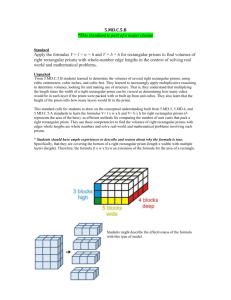
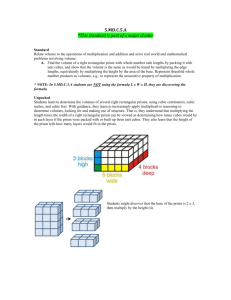
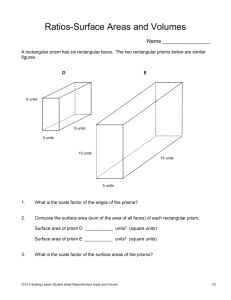

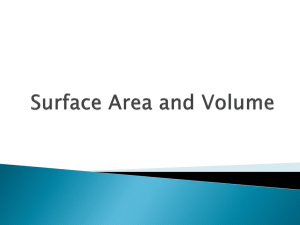
![Volume of Prisms and Cylinders [12/4/2013]](http://s2.studylib.net/store/data/005712570_1-e7691fc1893418ebe51c7a30e9e35d27-300x300.png)


